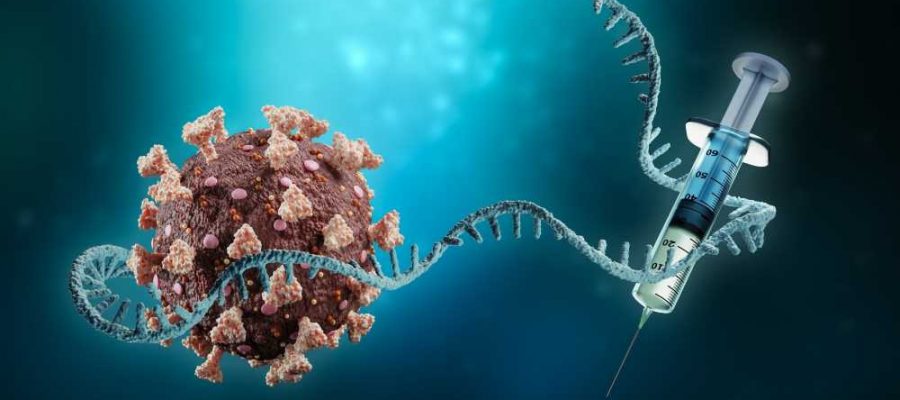In a recent study posted to the medRxiv* preprint server, researchers estimated the effectiveness of monovalent messenger ribonucleic acid (mRNA) coronavirus disease 2019 (COVID-19) vaccines against severe acute respiratory syndrome coronavirus 2 (SARS-CoV-2) Omicron variant of concern (VOC) infection severity outcomes among adults.

The continual emergence of novel Omicron sub-VOCs has threatened the efficacy of primary vaccinations and therapeutic agents such as monoclonal antibodies, warranting booster (third dose) vaccinations. Evaluating the effectiveness of mRNA COVID-19 booster vaccinations could inform booster dose administration planning to reduce the global health burden of COVID-19.
About the study
In the present test-negative (TN) study, researchers evaluated monovalent mRNA COVID-19 vaccine effectiveness (VE) against severity outcomes of Omicron infections.
The study comprised community residents aged 50 years and above with ≥1 RT-PCR (reverse transcription polymerase chain reaction) report for SARS-CoV-2 between 2 January 2022 and 1 October 2022. The participants were stratified by time elapsed since COVID-19 vaccination and age. Omicron was detected in almost all SARS-CoV-2-positive samples by late January 2022. The team excluded hospitalized individuals whose samples were obtained >3.0 days post-hospitalization and those with nosocomial infections.
The study outcome was COVID-19-associated hospitalization or deaths. VE estimates [two-dose (D2), three-dose (D3), and four-dose (D4) doses in comparison to non-vaccinated individuals) and marginal VE estimates (D3 or D4 vs. D2) against Omicron infection-associated hospital admissions and deaths were evaluated. In addition, VE during the predominance of Omicron BA.1/BA.2 (between 2 January 2022 and 2 July 2022) and BA.4/5 (between 3 July and 1 October 2022) sub-VOCs were compared.
Delta infections were detected based on WGS (whole genome sequencing) analysis or positive reports for the SARS-CoV-2 spike (S) gene in the target positive screening obtained before 24 January 2022 (n=72). Multivariable logistic regression modeling was used for the analysis. The TN design was applied to SARS-CoV-2 testing at laboratories of Canadian provinces, health administrative datasets, and COVID-19 vaccinations.
Results
The mean values for the age of cases and controls were 77 years and 66 years, respectively, and 57% of cases and 37% of controls were men. Among the study groups, the proportions of non-vaccinated individuals among cases and controls were 28% and five percent, respectively. Compared to the non-vaccinated, more COVID-19 vaccinees were women, had been administered influenza vaccinations, and resided in moderate- or high-income areas.
Among the vaccinees, more D2 vs. D3 or D4 were from low-income areas, and fewer had received influenza vaccinations. The sub-VOCs distributions were 50% and 50% for BA.1 and BA2, respectively, during BA.1 and BA.2 predominance and 10% and 90% for BA.4 and BA.5, respectively, during BA.4/BA.5 predominance.
A total of 11,160 and 62,880 individuals with Omicron infection-associated severity outcomes and TN symptomatic control individuals, respectively, were considered for the analysis. Compared to non-vaccinated individuals, the VE estimates ranged between 91% and 98% seven days to 59 days post-D3 but reduced to 76% to 87% after ≥8.0 months.
Seven to 59 days post-D4, VE restored between 92% and 97% but reduced to 86% to 89% after ≥4.0 months. Consistent trends in marginal VE were observed. The VE estimates were lower during Omicron BA.4/5 predominance compared to those observed during Omicron BA.1 and BA.2 predominance based on a similar number of days elapsed since COVID-19 vaccination. Differences in the VE estimates may have been observed due to greater immune-evasiveness of Omicron BA.4 and Omicron BA.5.
Conclusions
Overall, the study findings showed that D3 or D4 boosters of mRNA SARS-CoV-2 vaccinations of the monovalent type initially reinstituted robust immunity against hospitalizations and deaths associated with Omicron infections among all community-residing (especially elder) individuals. However, VE reduced with time, indicative of immunity waning, especially during the BA.4/5-dominant period.
Even though the vaccination-induced immune protection persisted at high levels four months D4 irrespective of age, whether the waning of immunity increases beyond four months is uncertain. The finding, in conjunction with the lower VE estimates against Omicron BA.4/5 and the probability of even lower efficacy against the novel XXB and BQ.1.1 strains, underpins booster administrations.
In addition, non-pharmaceutical interventions (NPIs) such as face mask use, social distancing, improved ventilation, and indoor air filtration could aid in mitigating the impact of existing Omicron sub-VOCs and those that are yet to emerge. Given the paucity of data against Omicron BA.4/5, novel strains, and bivalent vaccine introduction, continued VE monitoring efforts are required. Further research must be conducted to evaluate VE estimates for all Omicron sub-VOCs individually and must incorporate rapid antigen test results.
*Important notice
medRxiv publishes preliminary scientific reports that are not peer-reviewed and, therefore, should not be regarded as conclusive, guide clinical practice/health-related behavior, or treated as established information.
- Ramandip Grewal Ph.D. et al. (2022). Effectiveness of mRNA COVID-19 vaccine booster doses against Omicron severe outcomes. medRxiv. doi: https://doi.org/10.1101/2022.10.31.22281766 https://www.medrxiv.org/content/10.1101/2022.10.31.22281766v1
Posted in: Medical Science News | Medical Research News | Disease/Infection News
Tags: Antibodies, Antigen, Coronavirus, Coronavirus Disease COVID-19, covid-19, Efficacy, Gene, Genome, Global Health, Hospital, immunity, Influenza, Omicron, Polymerase, Polymerase Chain Reaction, Research, Respiratory, Ribonucleic Acid, SARS, SARS-CoV-2, Severe Acute Respiratory, Severe Acute Respiratory Syndrome, Syndrome, Transcription, Vaccine, Whole Genome Sequencing

Written by
Pooja Toshniwal Paharia
Dr. based clinical-radiological diagnosis and management of oral lesions and conditions and associated maxillofacial disorders.
Source: Read Full Article
